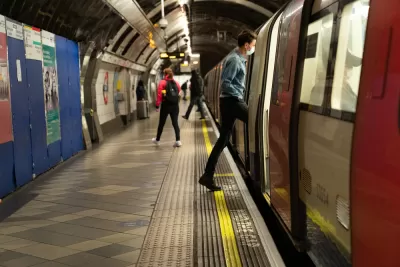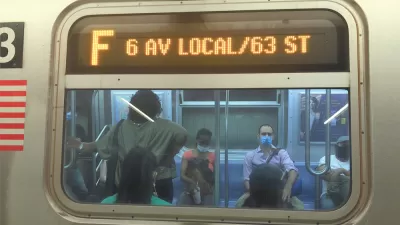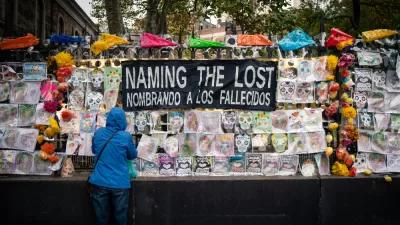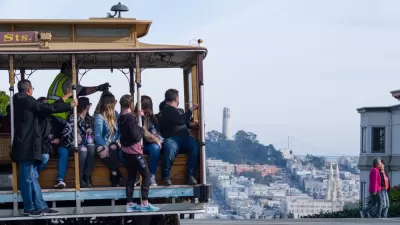Critic Randal O'Toole and advocate Todd Litman debate how communities should plan for public transit in the post pandemic future. Should it contract or expand?

The Pairagraph website is a "hub of discourse between pairs of notable individuals." The current debate pairs transit and Smart Growth critic Randal O'Toole against sustainable transportation advocate Todd Litman, to contrast their visions for the future of public transportation.
O'Toole argues that "The transit industry has become a giant scam, sucking up taxpayer dollars and producing little in return," and "Contrary to popular belief, transit is neither good for the environment nor vital to low-income families."
Litman responds by pointing out that "To be efficient and fair, a transportation system must be diverse to serve diverse demands, including the mobility needs of people who for any reason cannot, should not, or prefer not to drive. Public transit plays three important roles in such a system: it provides affordable mobility for non-drivers; efficient travel on busy urban corridors; and serves as a catalyst for compact, multimodal development where it is easy to get around without a car."
Both present various statistics to support their arguments. Because the format is so limited - 500 words per post - Litman developed a detailed technical report, The Business Case for Post-COVID Public Transit, to support his claims.
FULL STORY: What Is the Future for Transit After COVID?

Maui's Vacation Rental Debate Turns Ugly
Verbal attacks, misinformation campaigns and fistfights plague a high-stakes debate to convert thousands of vacation rentals into long-term housing.

Planetizen Federal Action Tracker
A weekly monitor of how Trump’s orders and actions are impacting planners and planning in America.

San Francisco Suspends Traffic Calming Amidst Record Deaths
Citing “a challenging fiscal landscape,” the city will cease the program on the heels of 42 traffic deaths, including 24 pedestrians.

Defunct Pittsburgh Power Plant to Become Residential Tower
A decommissioned steam heat plant will be redeveloped into almost 100 affordable housing units.

Trump Prompts Restructuring of Transportation Research Board in “Unprecedented Overreach”
The TRB has eliminated more than half of its committees including those focused on climate, equity, and cities.

Amtrak Rolls Out New Orleans to Alabama “Mardi Gras” Train
The new service will operate morning and evening departures between Mobile and New Orleans.
Urban Design for Planners 1: Software Tools
This six-course series explores essential urban design concepts using open source software and equips planners with the tools they need to participate fully in the urban design process.
Planning for Universal Design
Learn the tools for implementing Universal Design in planning regulations.
Heyer Gruel & Associates PA
JM Goldson LLC
Custer County Colorado
City of Camden Redevelopment Agency
City of Astoria
Transportation Research & Education Center (TREC) at Portland State University
Jefferson Parish Government
Camden Redevelopment Agency
City of Claremont





























